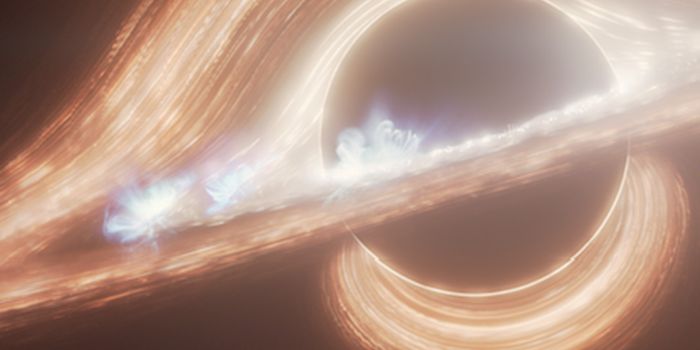Measurements Suggest Spin-Orbit Alignment for TRAPPIST-1's Exoplanets
Of all the exoplanetary systems that astronomers have discovered to date, perhaps one of the most intriguing of those is that of the TRAPPIST-1 system, residing some 39 light-years away from Earth. The TRAPPIST-1 system is unique because it contains at least seven known Earth-like terrestrial exoplanets, at least three of which reside in or near the host star’s habitable zone. Perhaps unsurprisingly, this raises questions about their likelihood of supporting alien life.
Image Credit: NASA/JPL-Caltech
One of the factors astronomers take into account when attempting to learn more about a system’s history is the planets’ obliquity – their orbital alignment relative to the host star’s rotational axis. Albeit not directly linked to habitability, understanding exoplanets’ movement patterns relative to their host star can provide clues about the system’s history, including details about its formation. The circumstances surrounding a system’s formation can have an impact on the habitability of its worlds.
Astronomers took full advantage of an opportunistic moment on August 31, 2018 to observe the TRAPPIST-1 system with the Subaru Telescope. During that time, at least three of the exoplanets orbiting the host star entered the line of sight between the star itself and the observatory, otherwise known as a transit event. As this happened, the astronomers measured the exoplanets’ obliquity, and the findings are now published in The Astrophysical Journal.
Related: The TRAPPIST-1 system could be a lot older than originally thought
At least two significant precedents were set by the observation; 1) it the first measurement of stellar obliquity for a low-mass M dwarf star like TRAPPIST-1; and 2) it was the first attempt at measuring the Rossiter-McLaughlin effect for exoplanets residing in the habitable zone. If you didn’t already know, the Rossiter-McLaughlin effect describes the blueshift and redshift in light waves observable as an eclipsing binary’s secondary body orbits the primary one – in this case, it was an exoplanet orbiting its host star.
So why is this important? – Primarily because it sheds light on how TRAPPIST-1 formed. The apparent lack of nearby objects allows astronomers to assume that nothing has disturbed the TRAPPIST-1 exoplanets and that they probably formed close to where they reside today, and this speaks volumes about the system’s primordial circumstances.
Notably, the small worlds didn’t spend enough time transiting their puny host star for the astronomers to capture highly precise measurements. Instead, the data is somewhat fuzzy and there’s room for error. While it appears that the exoplanets orbit TRAPPIST-1 in a path that follows its rotational axis, it’s possible that one or more of the exoplanets exhibits a slight deviation from the implied measurements; but it wouldn’t be anything substantial. Study lead author Teruyuki Hirano from the Tokyo Institute of Technology explains:
"The data suggest alignment of the stellar spin with the planetary orbital axes, but the precision of the measurements was not good enough to completely rule out a small spin-orbit misalignment. Nonetheless, this is the first detection of the effect with Earth-like planets and more work will better characterize this remarkable exoplanet system."
Related: Astronomers expect to study the TRAPPIST-1 system with the James Webb Space Telescope
The results of the observation are thought-provoking for several reasons, and they could lay the groundwork for additional observations of the TRAPPIST-1 system as astronomers attempt to learn more about its history and the potential habitability of three of the system’s Earth-like worlds. It should be interesting to see what becomes of it.
Source: The Astrophysical Journal via Phys.org









